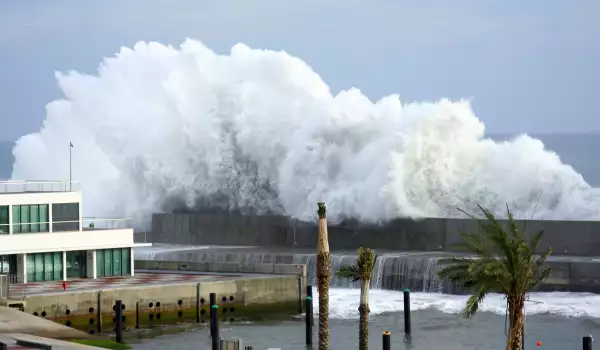The 2nd of its kind Climate Change Conference for all nations was held in Paris at the beginning of December. In it, leaders discussed the problems and measures that can be taken to stop the disastrous effect humanity is having on the Earth.
The 1st similar type of conference was held in 1997 in Kyoto. Today, 18 years later, it's clear that things have changed drastically and require immediate action.
Changes in climate are leading to extreme changes in Earth's appearance. Some of these are even measurable - the sea level is rising, temperatures as well, the percentage of melting ice is increasing. The consequences of this are never-before-seen natural disasters.
The rising waters are flooding habitable zones, while humanity's ever growing population is entering into territories outside of its domain. At some point this will lead to a deficit in habitable spaces. Plus, the higher temperatures and drastic changes increase the spread of diseases. These also lead to the extinction of more animal species.
All of this necessitates a much more serious look at the problem than last time. At the 1st conference, no one could have imagined that the changes would occur so quickly and they were discussed as something abstract that might happen in the distant future. Today, the data presented at the conference chills the blood. Here are the most distressing among them:
- Earth's population grew by 1.2 billion from 1997 to 2013. Along with this, carbon dioxide emissions from the burning of fossil fuels rose by 50%. Presently, mankind spews out over 100 million tons of carbon dioxide daily.

- The world's sea levels rose by about 2 1/2″ (6.2 cm) between 1997 and 2015.
- For the past 18 years, glaciers have lost 39.5 ft (12 m) of ice. Today, the Arctic Circle's ice pack is 316600 square miles (820000 square km) smaller. This is equal to the combined areas of the states of Arizona, Texas, California, New Mexico and Montana. The losses of ice sheets in Greenland and the West Antarctic have been calculated out to 5.5 trillion tons of ice, referencing NASA data.
- After 1997 set the record for the hottest year, many similar records followed. The years 1998, 2005, 2010, 2014 and 2015 were hotter and hotter, while next year is expected to give us even higher temperatures.
The deadliest heat waves were also registered within the scope of this 18-year period between the 2 conferences. In 1998 they hit South Asia, in 2003 - Russia, in 2006 - Western Europe, and in 2010 - India and Pakistan, taking thousands of lives. Along with these, hurricanes and typhoons rage across Earth every year.









